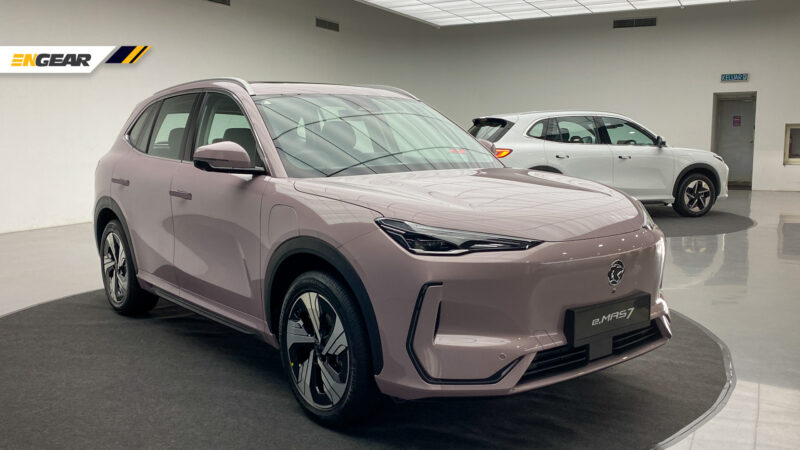The launch of Proton’s first electric SUV, the e.MAS 7, took place last week.
Despite being teased for a long time on social media, the e.MAS 7 remains a hot topic of discussion among netizens even now.
Opinions are varied, with some expressing positive thoughts while others share negative feedback.
For those contemplating whether to choose the more affordable Prime variant or the more fully-featured Premium variant, we are here to help.
With a price difference of approximately RM14,000, here are five key differences between the Proton e.MAS 7 Prime and e.MAS 7 Premium:
1. Battery Capacity
Both variants are equipped with an electric motor producing 215 hp and 320 Nm of torque, allowing for a 0-100 km/h acceleration in about 6.9 seconds.
However, the e.MAS 7 Prime is fitted with a short-blade Aegis LFP (Lithium Iron Phosphate) battery pack with a capacity of 49.52 kWh for a driving range of 345 km, while the e.MAS 7 Premium comes with a 60.22 kWh battery pack, providing a range of 410 km.
2. Charging Capability
For the smaller battery, the e.MAS 7 supports DC fast charging up to 80 kW, while the e.MAS 7 Premium can achieve a DC charging capacity of up to 100 kW.
Unfortunately, there appears to be no significant difference in charging times, with both variants recording approximately 20 minutes for DC charging from 30% to 80%.
3. Exterior
The e.MAS 7 Prime variant features 18-inch wheels wrapped in 225/55 R18 Giti tires.
In contrast, the e.MAS 7 Premium variant comes equipped with more aggressive 19-inch wheels, fitted with 235/50 R19 Goodyear tires.
Additionally, the e.MAS 7 Premium variant includes several extra features such as a panoramic glass roof, powered tailgate, and an Active Grill Shutter system.
4. Cabin Features
The standard features included in the Proton e.MAS 7 are quite extensive.
However, for the Premium model, it includes specific features such as a driver’s seat memory function, adjustable front passenger seat (four-way), front seat ventilation, ambient lighting supporting up to 256 colors, a head-up display, and a sound system with 16 speakers.
5. Safety Features
Typically, the lower variant may be lacking in comprehensive safety equipment compared to the premium variant.
However, for the e.MAS 7, both variants are equipped with a comprehensive safety suite that includes advanced driver-assistance systems (ADAS) Level 2, featuring important functions such as Autonomous Emergency Braking (AEB), Forward Collision Warning (FCW), Rear Cross Traffic Alert (RCTA), Lane Departure Warning (LDW), and Adaptive Cruise Control (ACC).
Moreover, the e.MAS 7 is also equipped with a 360-degree surround camera system.
The only minor difference is that the e.MAS 7 Prime variant does not come with front parking sensors.
Proton e.MAS 7 Prime & Premium
